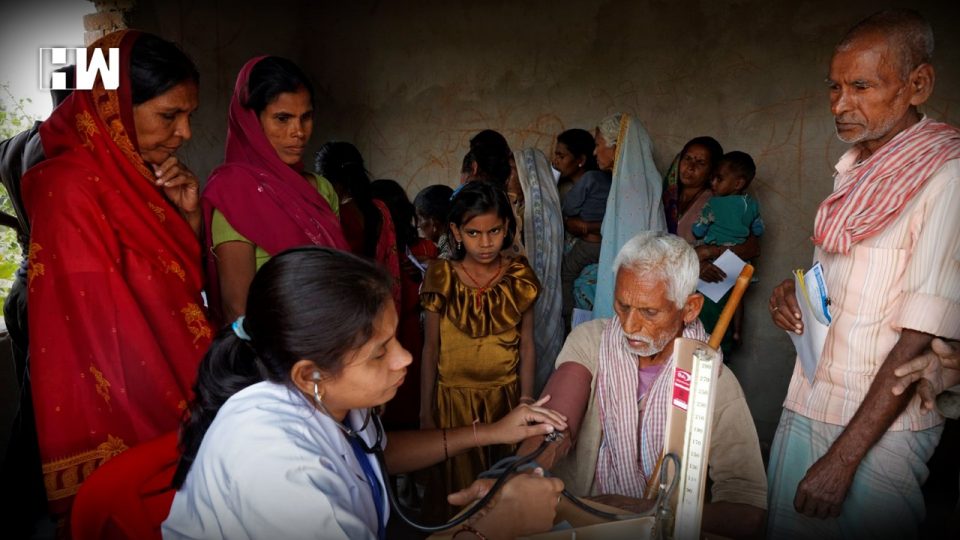When adjusted for inflation and as is characteristic of the historic business of spending on healthcare in India is only around 1%.
The New York Times had famously carried a piece reading India Wants to Give Half a Billion People Free Health Care. A day after, the present government in the final budget of its term announced a plan that seemed to want to achieve the same. While one understands why the paper would carry such a piece when America’s own Obamacare is under threat, one really needs to point out that while, superficially, the finance minister’s claims of healthcare for all seems to point to a shift in Indian thinking, the budget allocated for the same however brings us back down to earth.
It is understandable why there has been a sudden change of heart and a shift towards being perceived pro-poor- if not for budgeting, one can consider the 8 state elections coming up later this year. However, in the game of balancing between its electoral dreams and its fiscal hopes, the government seems to have used a good fiscal sleight of hand, to keep reinvigorate a flailing vote base.
First, is the small matter of “the world’s largest healthcare programme” promised by the Finance Minister, which would lead any reader to believe that there is a clear shift in the government’s priorities. A brief look at the budgetary allocation however, would then crush any such fantasies, as one comes to realise that the meagre 2.5% increase in the Health Budget, (compared to the Revised estimates for the 2017-18 year), is actually a decline in the overall budget allocation, when adjusted for inflation and as is characteristic of the historic business of spending on healthcare in India is only around 1%, that has now become a fixture in all Indian Fiscal Policy.
In terms of historicity, the plan and the dream isn’t very new either, being little more than a publicized clone of the Rashtriya Swasthya Bima Yojana (RSBY) that guaranteed coverage of 1 lakh per family. The present plan increases this number to about 5 lakhs but does not look to increase the allocation proportionally. For that matter, the plan doesn’t seem to look at and learn from its nearly defunct predecessor in terms of effectiveness either, as the RSBY fell flat on its larger goal of reducing Out of Pocket Expenditure, and ended up using only a third of the 1500 crores allocated to it. With the 500 crores spent, the actual coverage also remained less than a third of the lakh promised and the poor who rely on such a scheme had to satisfy themselves with 30,000 Rupee coverage.
The new schemes imitation of the RSBY seems quite inexplicable considering the fact that most healthcare expenditure in India is out of pocket, and even then the scheme chooses to only cover in patient care. Hence it is understandable when commentators suspect that the scheme has been built more for the benefit of insurance companies than the actual patients.
Similarly, let us also have a look at the total allocation that has been made for the Mahatma Gandhi Rural Guarantee Scheme, which, unlike its supposed counterpart in the health sector, is in fact, the largest Employment Guarantee Scheme in the world. Once again, taking note of the 55,000 crores allocated as the highest ever, a lot of column inches were sacrificed to critiquing or supporting this seemingly pro-poor stance. That it is not a pro-poor stance substantively seems to have only emerged from those who work on the ground with MGNREGA workers, with Nikhil Dey of the MKSS, nearly immediately calling out the farce.
To understand the full fiscal picture, one needs only to study the previous year’s budgeted expenditure. The initial 48,000 crores, was later met with additional, Extra Budgetary Support (EBS) of 7000 crores, which adds up to the exact amount allocated for this year, thus showing no actual change between what was expended last year to what has been allotted this year. Add to this the fact that the MGNREG’s have an outstanding liability of about 11,646 crores from the year before, to be paid to workers around the country and you see that the budget, this year will once again fall short. If we take it a step further and adjust for inflation right after, the result is a compounded effect on the inevitable shortfall.
What seems to be a common thread tying this entire charade together, however, (apart from the clear optics-without- substance phenomenon) seems to be the ease with which all MP salaries will now automatically be adjusted for inflation, but the same cannot be said at the national level for any of our schemes, especially those in the social sector, whose budgets inevitably end up being advertised as the “highest ever” but are substantively a reduction both in real terms and as a percentage of GDP.
Then again, the day Indians start actually interrogating the substance behind their governments’ schemes is the day an entire brand of politics dies.
Vineet John Samuel is a research intern at Oxfam India, a public policy commentator who writes for a clutch of publications with a special focus on social policy and development in the South Asian subcontinent.
As an independent media platform, we do not take advertisements from governments and corporate houses. It is you, our readers, who have supported us on our journey to do honest and unbiased journalism. Please contribute, so that we can continue to do the same in future.

